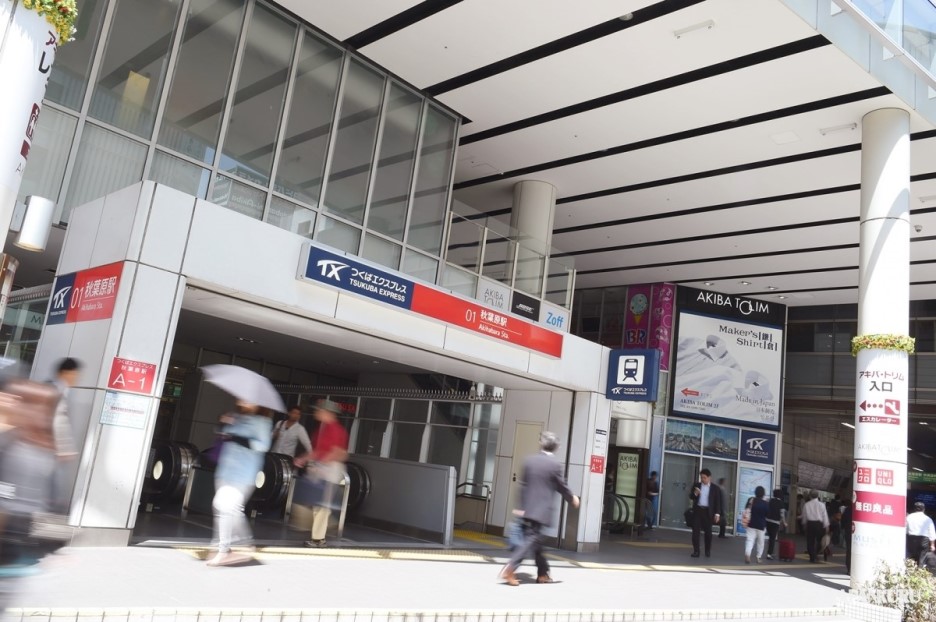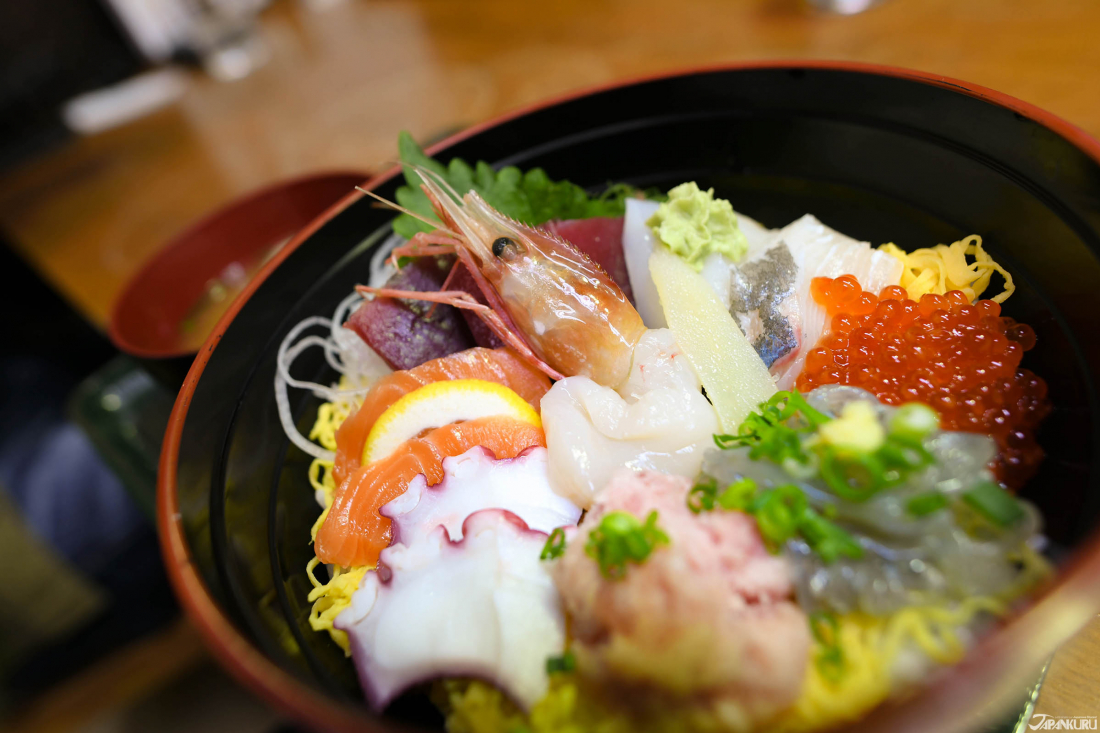
CONTENTS
A lot of the time when people come to Japan, Tokyo is their main point of interest. I mean, and why not? The crowded trains, tall buildings with neon lights everywhere, lots of "only in Japan" places to go to, the excitement of NEVER knowing what you’ll see…the list goes on!! However, more and more are the outskirts of Tokyo, particularly Japan’s nature spots, becoming a "must-go" when traveling to Japan.
JAPANKURU recently went around Ibaraki prefecture on a day trip and found such lovely spots!
Like mentioned above, Ibaraki prefecture is often forgotten, even by Japanese people, as a place to go and explore. There isn’t much information on "places to go in Ibaraki", let alone info in English. Thus we wanted to make an article giving people an idea of possible places to visit.
How to Get to Ibaraki from Tokyo
Option 1
Renting a Car from Nissan Rent-a-Car
the easiest way to do it is by renting a car from Tokyo.
Advantages of renting a car in Japan:
1. No need to worry about strict timetables,
confusing stations, or changing trains
2. No restrictions, i.e.
you can go places that public transportation can't
3. No need to lug around a bunch of luggage
to Ibaraki was at Nissan Rent-a-Car in Ueno.
It's about a minute walk from Yamashita Exit
at JR Ueno Station.
It's right across the street from Ichiran Ramen
(一蘭ラーメン),
and you'll see a blue parking lot signboard.
Just go in there and the rental store
is on the fifth floor.
The easiest way of remembering is
"a blue parking lot opposite Ichiran ramen".
🚙Nissan Rent-a-Car Ueno
(日産レンタカー上野駅前店)
1-50 Uenokoen, Taito-ku, Tokyo
東京都台東区上野公園1-50
Google Maps
⏰Business hours: 8:00 to 10:00pm
Nissan Rent-a-Car Ueno Ekimae (English)
※When using a rental car, an international license is required
Option 2
Limited Express Train JR Hitachi
It takes about 2 hours and 20 minutes to reach the capital of Ibaraki, Mito,
by JR express trains (Hitachi and Tokiwa) from Tokyo Station.
There really isn't much of a time difference compared to driving,
but since the one-way fare is 3,890 yen,
driving would be more economical if you have an international driver's license.
More info about Hitachi and Tokiwa here!
Option 3
Tsukuba Express
The Tsukuba Express is one of Tokyo's private railways.
Asakusa and Akihabara are only 8 minutes away,
and it's a good railway for locals and tourists alike.
If you plan on taking the Tsukuba Express,
you can ride the train to Tsukuba Station (the last stop).
Around Tsukuba are lots of nature spots to explore.
JAPANKURU went a few years ago, so if you would like an idea of what the area is like,
check out the link below⇩
Scenic Spots: Hitachi Seaside Park
❁❶❁
Hitachi Seaside Park
(国営ひたち海浜公園)
It really is no exaggeration to say that the Hitachi Seaside Park is the most famous among Ibaraki sightseeing spots. Originally it was an airfield that reopened in 1991 as a park, so its wide open space with no buildings in the vicinity is something special to other parks.
Hitachi Seaside Park has a series of flowers for you to see depending on the season. Among all of the flowers you can see there, one of the biggest attractions is the blue nemophila that bloom for about a month from the end of April every year. Hills that are blue like the sea are also a regular representing image of Ibaraki.
❁国Hitachi Seaside Park
🏢605-4 Onuma-aza, Mawatari, Hitachinaka, Ibaraki 312-0012
Google Maps
⏰9:30am~5pm (It depends on the season)
Closed: Closed on Tuesday if Monday is a National holiday.
💴Adults (high school studens↑): 450yen, junior high school students & under: free
💻Hitachi Seaside official website
Scenic Spots: Oarai Isosaki Shrine
⛩❷⛩
Oarai Isosaki Shrine
(大洗磯前神社)
Scenic Spots: Tsukimachi Waterfall
🌲❸🌲
Tsukimachi Waterfall
(月待の滝)
It is a stunning spot in Ibaraki
that is surrounded by lush greenery.
You can either look at the beautiful nature from close by,
or go behind the waterfall for a closer look!
It was some of our first time going behind a waterfall and
we were so surprised at how refreshing it was
with the cool temperature and sound of the waterfall.
🌲Tsukimachi Waterfall
🏢 Oazakawayama, Daikomachi, Kuji-gun, Ibaraki Prefecture
茨城県久慈郡大子町大字川山
Google Maps
If you go to Tsukimachi Waterfall, don't leave with on an empty stomach. Instead, try one of Japan's fun dishes! We're talking about nagashi somen, serving somen noodles flowing down bamboo and trying to catch it! At the restaurant that is directly next to Tsukimachi Waterfall, "Momijien" (もみじ苑), you can enjoy Japan's fun way of eating noodles while overlooking the waterfall!
★Momijien (もみじ苑)
🏢Right next to Tsukimachi Waterfall Google Maps
⏰10:30am~7pm !!Closed every Wednesday
Ibaraki Activities
Things to Do: Ryujin-kyo
🌉①🌉
Canyon Ryujin Kyo Rafting
(竜神峡)
Ibaraki's beautiful nature is not just something to gaze at, you can also get involved and become a part of it! The upper stream of the "Ryujin Dam" (竜神峡) in the canyon called Ryujin-kyo is surrounded by mountains and makes you forget you're in Japan.
Here you can tour the canyon by canoe, SUP (stand up paddle surfing), and river rafting on boat tubes. It's a really relaxing and fun way to get involved with Japanese nature. This sort of activity you definitely won't find in Tokyo!
🌉Canon Ryujin Kyo Rafting
🏢2153-39 Shimakura-cho, Shimoda-city, Ibaraki
茨城県常陸太田市下高倉町2153-39
Google Maps
💻Links to related pages
※Open from April 27 to August 31 only.
※Since you might get wet, a change of clothes, towels, and shoes are available
🌉②🌉
Ryujin Bungee Jumping
(竜神バンジー)
This bridge across the canyon is called "Ryujin Otsuribashi" (竜神大吊橋). With the bridge having a length of 375 meters and a height of 100 meters over Ryujin Gorge, this is the highest bungee jump spot in Japan.
Ryujin Bungee Jumping!
🏢2133-6 Kenganocho, Hitachiota-shi, Ibaraki
茨城県常陸太田市天下野町2133-6
Google Maps
☎Contact Phone: 0278-72-8133
– Car rental map Code: 379 341 490 * 24
⏰9am〜5pm (accepted until 4:30pm)
💴16,000 yen
– 50% when canceling the previous day, 100% when canceled on the day
– Availability:
Age between 15 and over / weight between 40 and 105kg
– Reservation page (English)
💻Official website link
Things to Do: Nakaminato Fish Market
🎣③🐙
Nakaminato Fish Market
(那珂湊おさかな市場)
More and more passengers want to go sightseeing in Hokkaido. If you have enough time, you can choose a more economical and affordable method, the Shosen Mitsui Ferry Sunflower! If you come by car, you can park your car inside the boat that way you can cruise around by car once you get to Hokkaido! It's a really cool way to travel, so if your schedule isn't too tight, give it a try!
For more information about the Shosen Mitsui Ferry Sunflower, click here!
🚢Ferry Sunflower (フェリーさんふらわあ)
Passenger Terminal: Oarai Port Ferry Terminal
🏢Chuo 2, Oaraimachi Port, Higashiibaraki-gun, Ibaraki
茨城県東茨城郡大洗町港中央2
Google Maps
💻Official website link
🚌Access:
From Tokyo Station to Oarai Ferry Terminal:
① From Tokyo Station's JR Bus Terminal (located at Yaesu South Exit of the station), take the express bus "Mitogo" (みと号) for Mito Station (水戸駅).
It will take you to Oarai Ferry Terminal without having to change transportation!
★ Only one bus a day
⏰Departs Tokyo Station at 2:20pm → Arrives at Oarai Ferry Terminal at 4:45pm
To return to Tokyo:
⏰Oarai Ferry Terminal 3pm → Tokyo Station 6:28pm
💴2,320yen (children are 1/2 price)
Stay tuned for new, original articles every day on JAPANKURU🐶.
Or add us on Google+, Instagram, Facebook to share your Japanese pictures💖🗾
Details
NAME:Shosen Mitsui Ferry (商船三井フェリー)
MAP
COMMENT
FEATURED MEDIA
VIEW MORE 
A New Tokyo Animal Destination: Relax & Learn About the World’s Animals in Japan
#pr #japankuru #anitouch #anitouchtokyodome #capybara #capybaracafe #animalcafe #tokyotrip #japantrip #카피바라 #애니터치 #아이와가볼만한곳 #도쿄여행 #가족여행 #東京旅遊 #東京親子景點 #日本動物互動體驗 #水豚泡澡 #東京巨蛋城 #เที่ยวญี่ปุ่น2025 #ที่เที่ยวครอบครัว #สวนสัตว์ในร่ม #TokyoDomeCity #anitouchtokyodome

Shohei Ohtani Collab Developed Products & Other Japanese Drugstore Recommendations From Kowa
#pr #japankuru
#kowa #syncronkowa #japanshopping #preworkout #postworkout #tokyoshopping #japantrip #일본쇼핑 #일본이온음료 #오타니 #오타니쇼헤이 #코와 #興和 #日本必買 #日本旅遊 #運動補充能量 #運動飲品 #ช้อปปิ้งญี่ปุ่น #เครื่องดื่มออกกำลังกาย #นักกีฬา #ผลิตภัณฑ์ญี่ปุ่น #อาหารเสริมญี่ปุ่น

도쿄 근교 당일치기 여행 추천! 작은 에도라 불리는 ‘가와고에’
세이부 ‘가와고에 패스(디지털)’ 하나면 편리하게 이동 + 가성비까지 완벽하게! 필름카메라 감성 가득한 레트로 거리 길거리 먹방부터 귀여움 끝판왕 핫플&포토 스폿까지 총집합!
Looking for day trips from Tokyo? Try Kawagoe, AKA Little Edo!
Use the SEIBU KAWAGOE PASS (Digital) for easy, affordable transportation!
Check out the historic streets of Kawagoe for some great street food and plenty of picturesque retro photo ops.
#pr #japankuru #도쿄근교여행 #가와고에 #가와고에패스 #세이부패스 #기모노체험 #가와고에여행 #도쿄여행코스 #도쿄근교당일치기 #세이부가와고에패스
#tokyotrip #kawagoe #tokyodaytrip #seibukawagoepass #kimono #japantrip

Hirakata Park, Osaka: Enjoy the Classic Japanese Theme Park Experience!
#pr #japankuru #hirakatapark #amusementpark #japantrip #osakatrip #familytrip #rollercoaster #retrôvibes #枚方公園 #大阪旅遊 #關西私房景點 #日本親子旅行 #日本遊樂園 #木造雲霄飛車 #히라카타파크 #สวนสนุกฮิราคาตะพาร์ค

🍵Love Matcha? Upgrade Your Matcha Experience With Tsujiri!
・160년 전통 일본 말차 브랜드 츠지리에서 말차 덕후들이 픽한 인기템만 골라봤어요
・抹茶控的天堂!甜點、餅乾、飲品一次滿足,連伴手禮都幫你列好清單了
・ส่องมัทฉะสุดฮิต พร้อมพาเที่ยวร้านดังในอุจิ เกียวโต
#pr #japankuru #matcha #matchalover #uji #kyoto #japantrip #ujimatcha #matchalatte #matchasweets #tsujiri #말차 #말차덕후 #츠지리 #교토여행 #말차라떼 #辻利抹茶 #抹茶控 #日本抹茶 #宇治 #宇治抹茶 #日本伴手禮 #抹茶拿鐵 #抹茶甜點 #มัทฉะ #ของฝากญี่ปุ่น #ชาเขียวญี่ปุ่น #ซึจิริ #เกียวโต

・What Is Nenaito? And How Does This Sleep Care Supplement Work?
・你的睡眠保健品——認識「睡眠茶氨酸錠」
・수면 케어 서플리먼트 ‘네나이토’란?
・ผลิตภัณฑ์เสริมอาหารดูแลการนอน “Nenaito(ネナイト)” คืออะไร?
#pr #japankuru #sleepcare #japanshopping #nenaito #sleepsupplement #asahi #睡眠茶氨酸錠 #睡眠保健 #朝日 #l茶胺酸 #日本藥妝 #日本必買 #일본쇼핑 #수면 #건강하자 #네나이토 #일본영양제 #อาหารเสริมญี่ปุ่น #ช้อปปิ้งญี่ปุ่น #ร้านขายยาญี่ปุ่น #ดูแลตัวเองก่อนนอน #อาซาฮิ

Japanese Drugstore Must-Buys! Essential Items from Hisamitsu® Pharmaceutical
#PR #japankuru #hisamitsu #salonpas #feitas #hisamitsupharmaceutical #japanshopping #tokyoshopping #traveltips #japanhaul #japantrip #japantravel

Whether you grew up with Dragon Ball or you just fell in love with Dragon Ball DAIMA, you'll like the newest JINS collab. Shop this limited-edition Dragon Ball accessory collection to find some of the best Dragon Ball merchandise in Japan!
>> Find out more at Japankuru.com! (link in bio)
#japankuru #dragonball #dragonballdaima #animecollab #japanshopping #jins #japaneseglasses #japantravel #animemerch #pr

This month, Japankuru teamed up with @official_korekoko to invite three influencers (originally from Thailand, China, and Taiwan) on a trip to Yokohama. Check out the article (in Chinese) on Japankuru.com for all of their travel tips and photography hints - and look forward to more cool collaborations coming soon!
【橫濱夜散策 x 教你怎麼拍出網美照 📸✨】
每次來日本玩,是不是都會先找旅日網紅的推薦清單?
這次,我們邀請擁有日本豐富旅遊經驗的🇹🇭泰國、🇨🇳中國、🇹🇼台灣網紅,帶你走進夜晚的橫濱!從玩樂路線到拍照技巧,教你怎麼拍出最美的夜景照。那些熟悉的景點,換個視角說不定會有新發現~快跟他們一起出發吧!
#japankuru #橫濱紅磚倉庫 #汽車道 #中華街 #yokohama #japankuru #橫濱紅磚倉庫 #汽車道 #中華街 #yokohama #yokohamaredbrickwarehouse #yokohamachinatown

If you’re a fan of Vivienne Westwood's Japanese designs, and you’re looking forward to shopping in Harajuku this summer, we’ve got important news for you. Vivienne Westwood RED LABEL Laforet Harajuku is now closed for renovations - but the grand reopening is scheduled for July!
>> Find out more at Japankuru.com! (link in bio)
#japankuru #viviennewestwood #harajuku #omotesando #viviennewestwoodredlabel #viviennewestwoodjapan #비비안웨스트우드 #오모테산도 #하라주쿠 #日本購物 #薇薇安魏斯伍德 #日本時尚 #原宿 #表參道 #japantrip #japanshopping #pr

Ready to see TeamLab in Kyoto!? At TeamLab Biovortex Kyoto, the collective is taking their acclaimed immersive art and bringing it to Japan's ancient capital. We can't wait to see it for ourselves this autumn!
>> Find out more at Japankuru.com! (link in bio)
#japankuru #teamlab #teamlabbiovortex #kyoto #kyototrip #japantravel #artnews
Photos courtesy of teamLab, Exhibition view of teamLab Biovortex Kyoto, 2025, Kyoto ® teamLab, courtesy Pace Gallery

Japanese Makeup Shopping • A Trip to Kamakura & Enoshima With Canmake’s Cool-Toned Summer Makeup
#pr #canmake #enoshima #enoden #에노시마 #캔메이크 #japanesemakeup #japanesecosmetics

⚔️The Robot Restaurant is gone, but the Samurai Restaurant is here to take its place. Check it out, and don't forget your coupon!
🍣신주쿠의 명소 로봇 레스토랑이 사무라이 레스토랑으로 부활! 절찬 쿠폰 발급중
💃18歲以上才能入場的歌舞秀,和你想的不一樣!拿好優惠券去看看~
#tokyo #shinjuku #samurairestaurant #robotrestaurant #tokyotrip #도쿄여행 #신주쿠 #사무라이레스토랑 #이색체험 #할인이벤트 #歌舞伎町 #東京景點 #武士餐廳 #日本表演 #日本文化體驗 #japankuru #japantrip #japantravel #japanlovers #japan_of_insta

Japanese appliance & electronics shopping with our KOJIMA x BicCamera coupon!
用JAPANKURU的KOJIMA x BicCamera優惠券買這些正好❤️
코지마 x 빅 카메라 쿠폰으로 일본 가전 제품 쇼핑하기
#pr #japankuru #japanshopping #kojima #biccamera #japaneseskincare #yaman #dji #osmopocket3 #skincaredevice #日本購物 #美容儀 #相機 #雅萌 #日本家電 #일본여행 #면세 #여행꿀팁 #일본쇼핑리스트 #쿠폰 #일본쇼핑 #일본브랜드 #할인 #코지마 #빅카메라 #japankurucoupon


































































